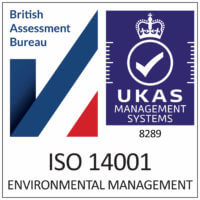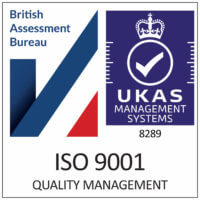Improving Water Retention with Enriched Topsoil
Nov 9th 2023
Imagine having a lush, green garden with soil that effortlessly retains water, keeping your plants healthy and thriving. It may seem like a dream, but with the help of enriched topsoil, this can become a reality. Enriched topsoil is a remarkable resource that can significantly enhance water retention in your garden. By understanding the benefits and techniques of using enriched topsoil, you can transform your garden into a water-efficient oasis, allowing your plants to flourish and ensuring a sustainable and beautiful landscape.
The Importance of Water Retention
Water retention is a crucial factor in maintaining healthy soil and promoting optimal plant growth. Understanding the need for water retention and the benefits of improving it can greatly impact the success of gardening, landscaping, and agricultural endeavors.
Understanding the Need for Water Retention
Water is an essential resource for all living organisms, including plants. Proper water retention ensures that plants have a steady supply of moisture, even during dry periods. It also helps to reduce water runoff, preventing soil erosion and conserving water resources.
Without adequate water retention, plants may not receive the necessary amount of moisture to thrive. This can lead to stunted growth, wilting, and even plant death. Additionally, high levels of water runoff can carry away valuable nutrients, further depleting the soil’s fertility.
The Benefits of Improving Water Retention
Improving water retention in soil offers a multitude of benefits. Firstly, it allows plants to access a consistent water supply, promoting vigorous growth and healthy foliage. Plants with improved water retention capabilities are more resilient during droughts and can withstand extended periods without rainfall.
Furthermore, enhanced water retention aids in soil fertility by preventing nutrient leaching. When water rapidly flows through the soil, essential nutrients can be washed away, making them inaccessible to plants. By retaining water, the soil can retain and deliver these vital nutrients to plant roots, ensuring their optimal absorption.
Moreover, improved water retention in soil helps to moderate soil temperature. Water has a higher heat capacity than air, meaning it can absorb and release heat more slowly. As a result, soils with good water retention properties remain cooler during hot weather, protecting plant roots from heat stress.
Introduction to Enriched Topsoil
To fully grasp the concept of improved water retention, it is essential to understand the basics of topsoil and the necessity of enriching it.
What is Topsoil?
Topsoil refers to the uppermost layer of soil, typically ranging from 2 to 8 inches deep. It is rich in organic matter and nutrients, making it the most fertile and crucial layer for plant growth. Topsoil contains a mixture of minerals, organic material, air, and water, providing the ideal habitat for plant roots.
The Necessity of Enriching Topsoil
Enriching topsoil is vital as it replenishes valuable nutrients that may be depleted due to factors such as erosion, leaching, or improper land management practices. By supplementing the topsoil with essential elements, organic matter, and soil amendments, individuals can enhance its water retention properties.
Enriched topsoil has a higher capacity to hold water, preventing excessive runoff and ensuring a consistent supply of moisture to plants. It also promotes the growth of beneficial microorganisms and earthworms, creating a healthy soil ecosystem that aids in nutrient availability and overall soil health.
Factors Impacting Water Retention
Several factors influence water retention in soil, and understanding these factors is crucial in implementing effective strategies to improve water retention.
Soil Texture and Structure
Soil texture and structure play a vital role in water retention capabilities. Soils with a high clay content tend to have better water retention than sandy soils, as the smaller clay particles can hold water more effectively. Additionally, soils with a well-aggregated structure, characterized by crumbly texture, have improved water retention compared to compacted or sandy soils.
Organic Matter Content
The organic matter content in soil significantly impacts water retention. Organic matter acts as a sponge, holding water and gradually releasing it to plant roots. Soils with higher organic matter content exhibit improved water-holding capacity and can retain moisture for more extended periods.
Compaction Levels
Soil compaction reduces pore space and restricts water retention. Compacted soils have lower infiltration rates, leading to increased runoff and decreased water availability for plants. By addressing and alleviating soil compaction, water retention capabilities can be greatly enhanced.
Enhancing Soil Structure for Improved Water Retention
Soil structure is crucial for optimal water retention, and various methods can be employed to improve it.
Importance of Soil Structure
Soil structure refers to the arrangement of soil particles and the spaces between them. A well-structured soil allows for adequate pore space, facilitating water movement and retention. It promotes the infiltration of water into the soil profile while preventing excessive runoff.
Additionally, soil structure influences root penetration and growth. Well-structured soil allows roots to penetrate easily, ensuring efficient water uptake and nutrient absorption.
Methods to Improve Soil Structure
To enhance soil structure, several practices can be implemented:
- Tillage: Proper tillage techniques can break up compacted soil layers, promoting better soil structure and water infiltration.
- Cover Crops: Planting cover crops helps to improve soil structure by adding organic matter and increasing microbial activity, resulting in improved water retention.
- Crop Rotation: Regularly rotating crops helps prevent soil compaction and nutrient depletion, contributing to healthier soil structure and enhanced water retention.
By implementing these techniques, soil structure can be improved, leading to enhanced water retention capabilities.
Introducing Organic Matter to Enhance Water Retention
Organic matter is a key component in soil that greatly influences water retention. Adding organic matter to the topsoil can have significant benefits.
The Role of Organic Matter
Organic matter holds water like a sponge. It absorbs moisture and gradually releases it to plant roots, ensuring a consistent supply of water. Moreover, organic matter improves soil structure, creating pore spaces for water infiltration and storage.
Organic matter also enhances microbial activity in the soil, fostering a healthy soil ecosystem that aids in nutrient cycling and availability to plants. It improves the overall soil health and vitality, leading to improved water retention capabilities.
Mulching Techniques for Water Retention
Mulching is an effective technique for improving water retention in soil. Applying a layer of organic mulch helps conserve soil moisture by reducing evaporation. Mulch acts as a protective barrier, shielding the soil from direct sunlight and extreme temperature fluctuations.
Additionally, mulch gradually decomposes, adding organic matter to the topsoil and enhancing its water retention properties. It also suppresses weed growth, reducing competition for water and nutrients.






